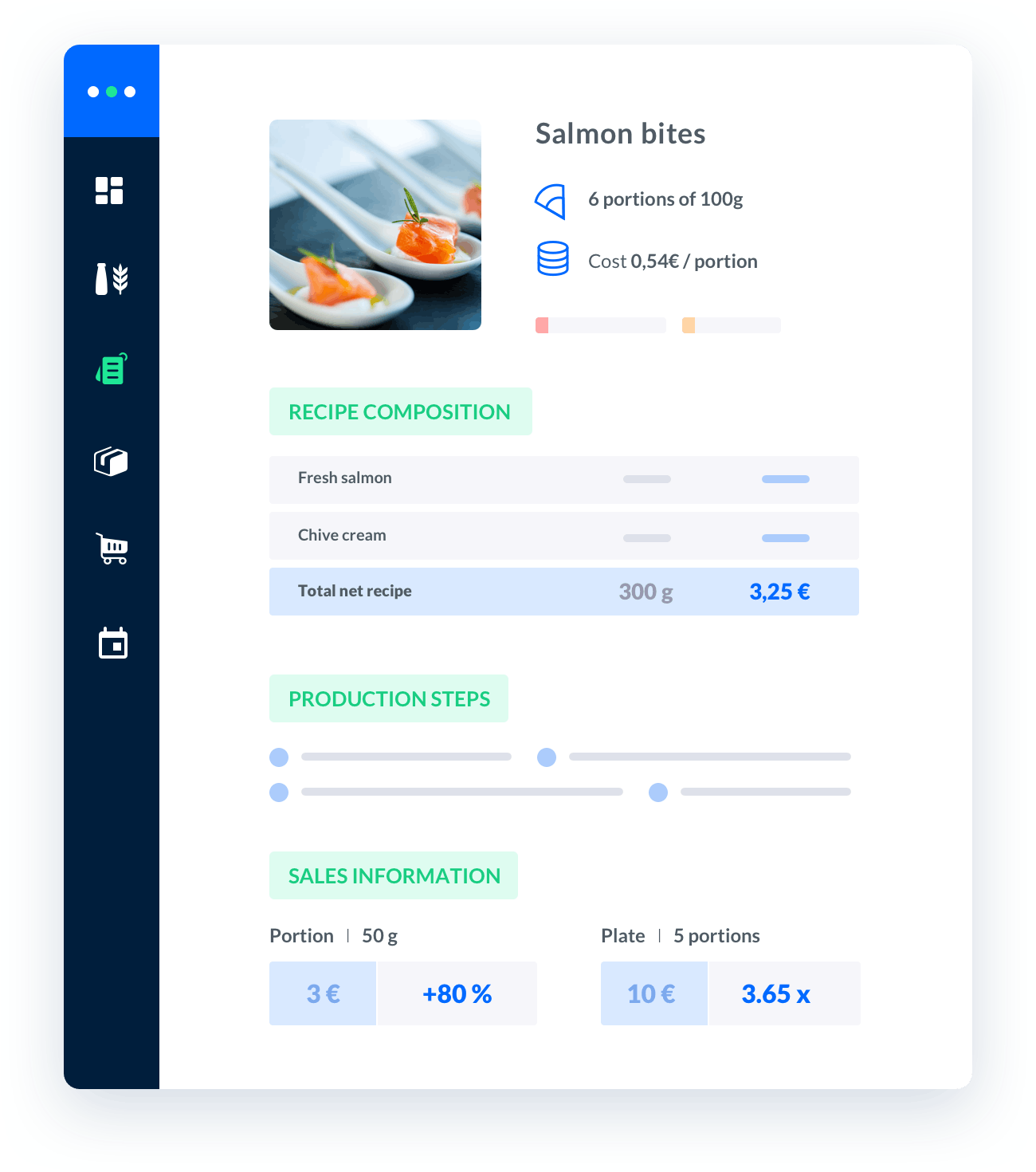restaurant labor cost spreadsheet
"Restaurant labor cost is a crucial aspect of managing a successful establishment.Tracking and managing labor costs is essential for maintaining profitability and ensuring the smooth operation of your restaurant.

Melba: the food cost app to optimize the profitability of your restaurant
Discover how to optimize the profitability of your restaurant with melba

The ultimate guide to food cost restaurant
Learn more about the food cost basis and how to reduce your food cost percentage
Restaurant labor cost is a crucial aspect of managing a successful establishment. Tracking and managing labor costs is essential for maintaining profitability and ensuring the smooth operation of your restaurant. One effective way to keep track of labor costs is by using a restaurant labor cost spreadsheet. In this article, we will explore the importance of restaurant labor cost management, the benefits of using a spreadsheet, and provide a step-by-step guide on how to create your own restaurant labor cost spreadsheet.
The Importance of Restaurant Labor Cost Management
Managing labor costs is crucial for the success and profitability of any restaurant. Labor costs typically account for a significant portion of a restaurant's expenses, and effectively managing these costs can greatly impact the bottom line. Here are some reasons why restaurant labor cost management is important:
- Cost Control: By effectively managing labor costs, you can control and reduce unnecessary expenses, ensuring that your restaurant operates within budget.
- Profitability: By optimizing labor costs, you can improve profitability and increase your restaurant's overall financial performance.
- Efficiency: Managing labor costs helps ensure that you have the right number of staff scheduled at the right times, preventing overstaffing or understaffing situations.
- Employee Satisfaction: Proper labor cost management can help create a fair and balanced work environment, leading to increased employee satisfaction and retention.
Benefits of Using a Restaurant Labor Cost Spreadsheet
Using a restaurant labor cost spreadsheet has several advantages over traditional pen-and-paper or manual tracking methods. Here are some benefits of using a spreadsheet:
- Accuracy: Spreadsheets provide accurate calculations and allow for easy updates and adjustments.
- Organization: A well-designed spreadsheet helps organize and categorize labor cost data, making it easier to analyze and identify areas for improvement.
- Automation: Spreadsheets can automate calculations, reducing the time and effort required to calculate labor costs manually.
- Data Analysis: Spreadsheets allow for in-depth analysis of labor cost trends, enabling you to make informed decisions based on real-time data.
- Flexibility: With a spreadsheet, you can customize and tailor it to your specific restaurant's needs, adding or removing columns and formulas as necessary.
Creating a Restaurant Labor Cost Spreadsheet
Now that we understand the importance of restaurant labor cost management and the benefits of using a spreadsheet, let's dive into creating our own restaurant labor cost spreadsheet. Follow these steps:
Step 1: Determine Your Labor Cost Categories
Before creating your spreadsheet, it's important to identify the different labor cost categories specific to your restaurant. Common labor cost categories include:
- Hourly Wages
- Overtime Wages
- Benefits (Healthcare, Vacation, etc.)
- Payroll Taxes
- Training Expenses
Step 2: Set Up Your Spreadsheet
Open a blank spreadsheet in your preferred software, such as Microsoft Excel or Google Sheets. Set up the necessary columns to track your labor costs, including:
- Date/Time
- Employee Name
- Job Position
- Regular Hours
- Overtime Hours
- Hourly Wage
- Overtime Wage
- Benefits
- Payroll Taxes
- Training Expenses
- Total Labor Cost
Step 3: Inputting Data
Once you have set up your spreadsheet, start inputting the relevant data for each employee and date. Fill in the columns with the appropriate information, such as employee names, hours worked, wages, benefits, and any additional labor cost details.
Step 4: Calculating Labor Costs
To calculate labor costs, create formulas in the ""Total Labor Cost"" column. Use the appropriate formulas to calculate regular wages, overtime wages, and any additional costs. For example, to calculate regular wages, multiply the regular hours by the hourly wage and add any benefits or payroll taxes.
Step 5: Analyzing and Adjusting
Regularly analyze your labor cost spreadsheet to identify any trends or areas for improvement. Look for patterns of excessive overtime, high labor costs on specific days, or discrepancies in employee scheduling. Make adjustments as necessary to optimize labor costs and ensure efficient staffing.
By following these steps and consistently updating your restaurant labor cost spreadsheet, you can effectively track and manage your labor costs, leading to improved profitability and operational efficiency.
"





